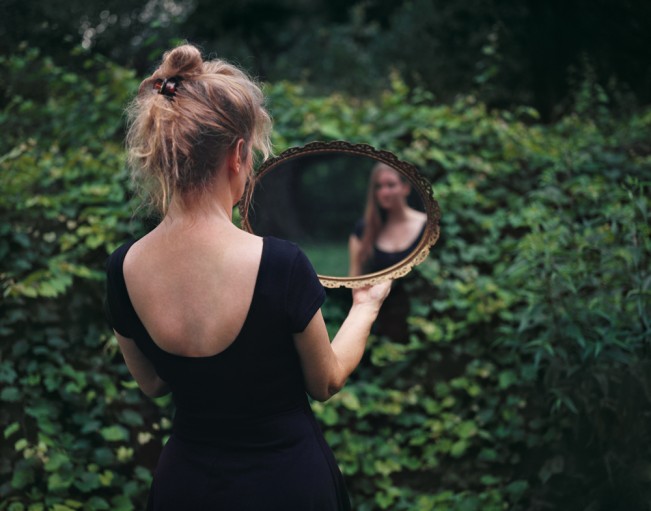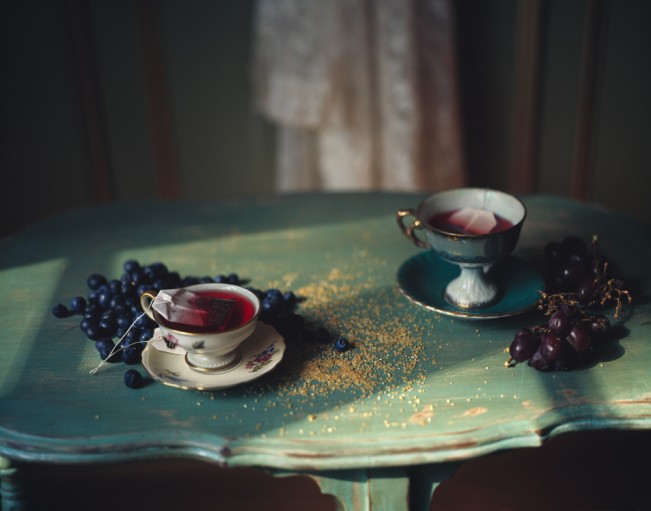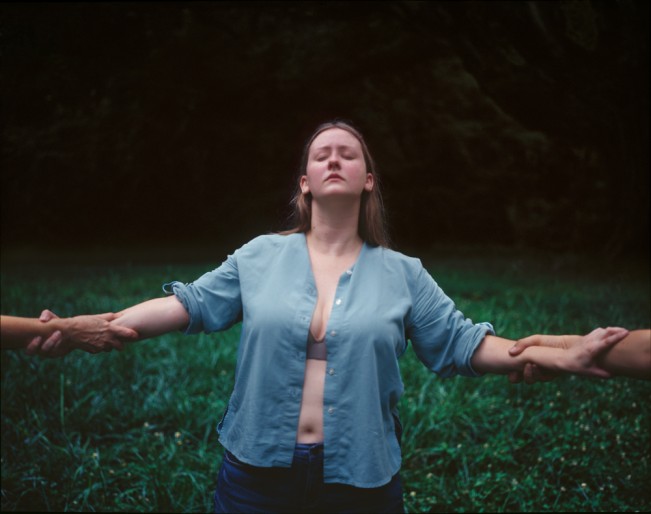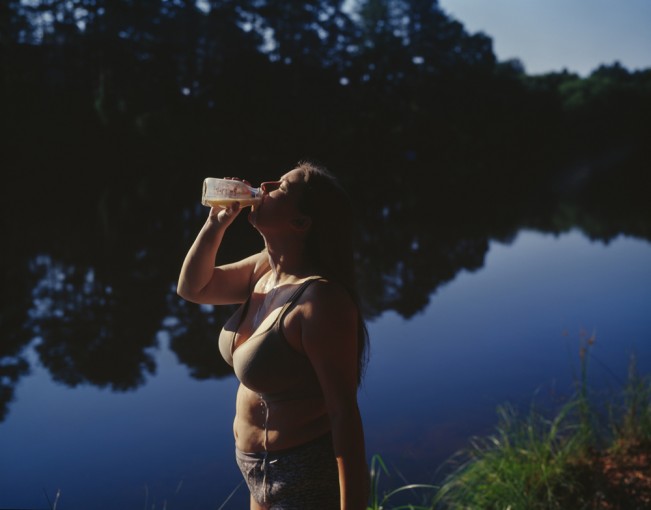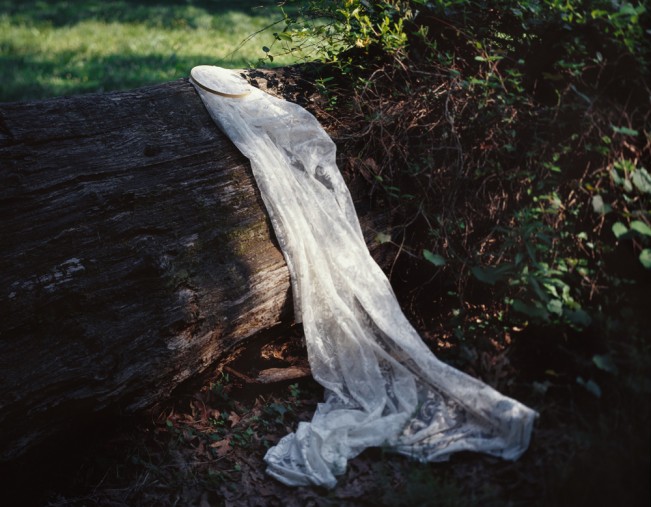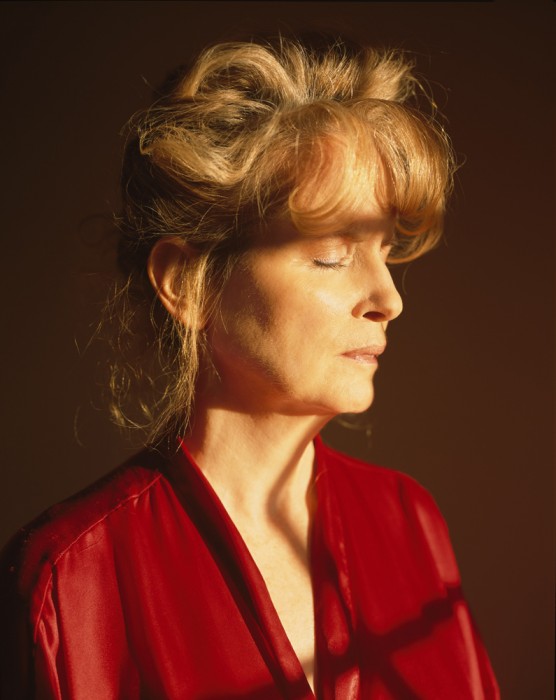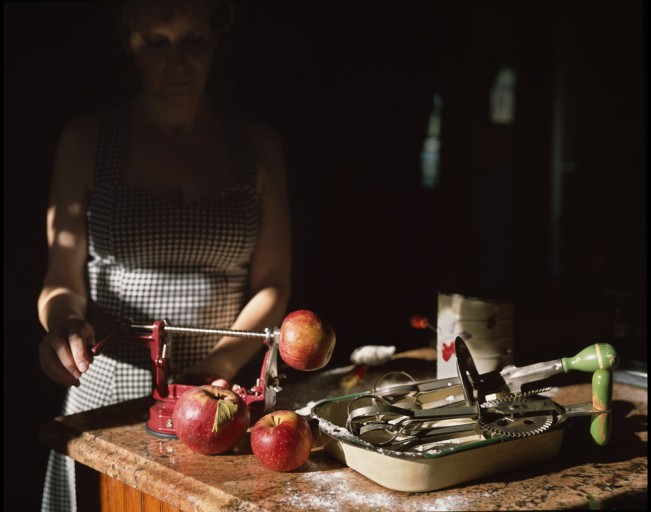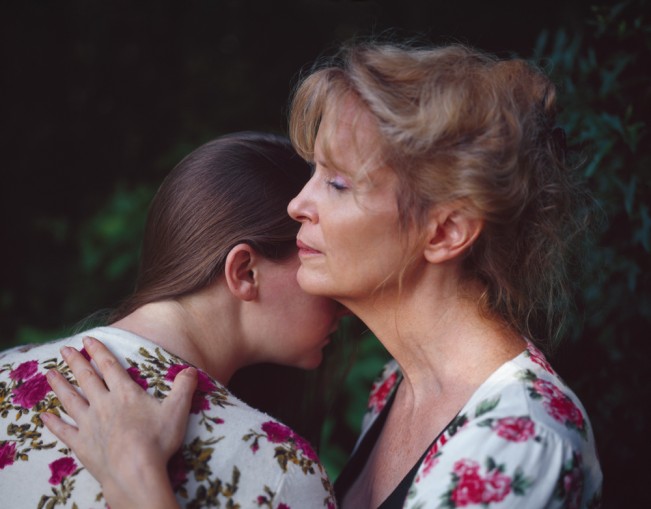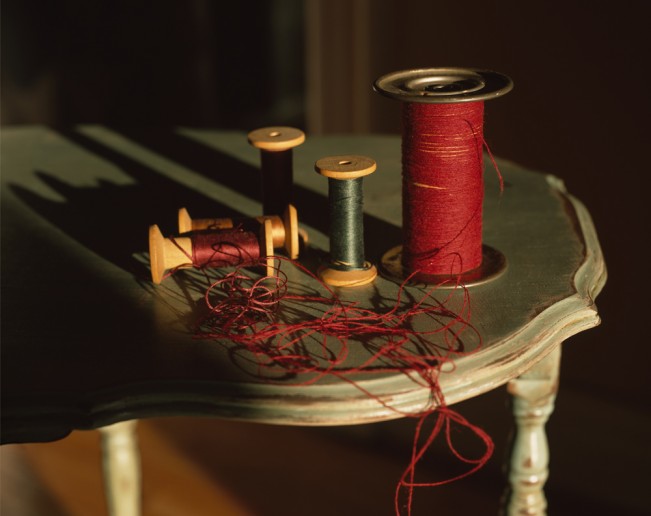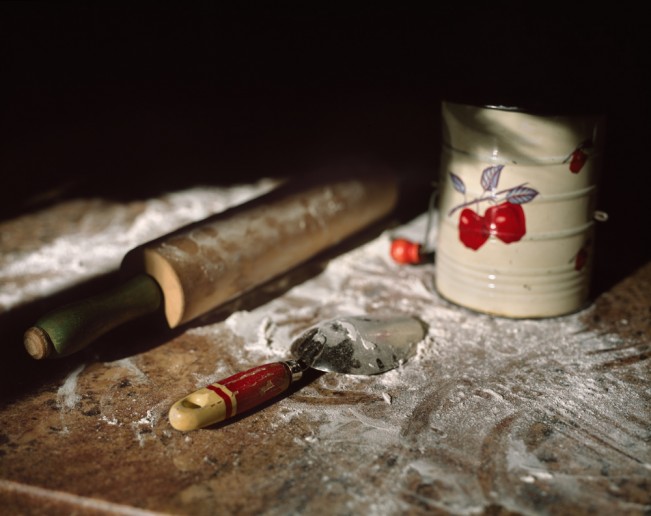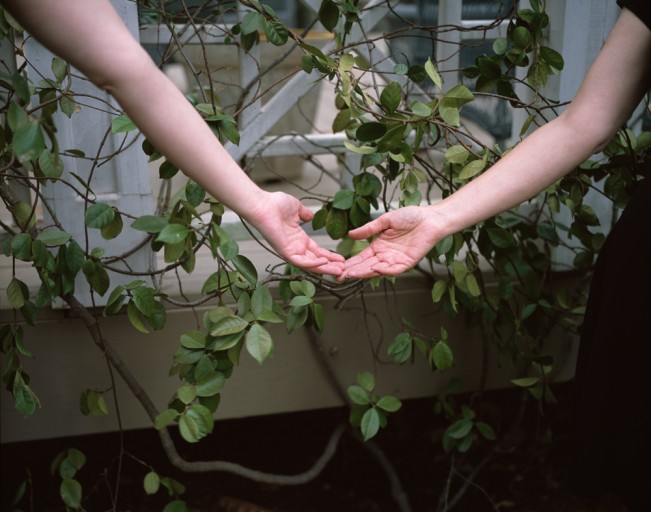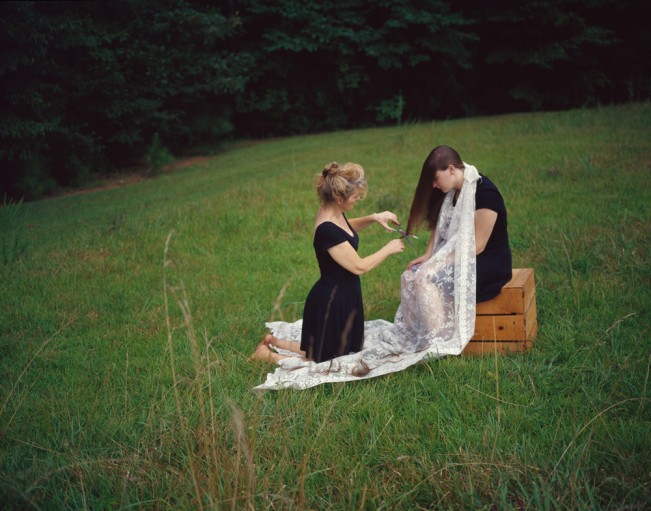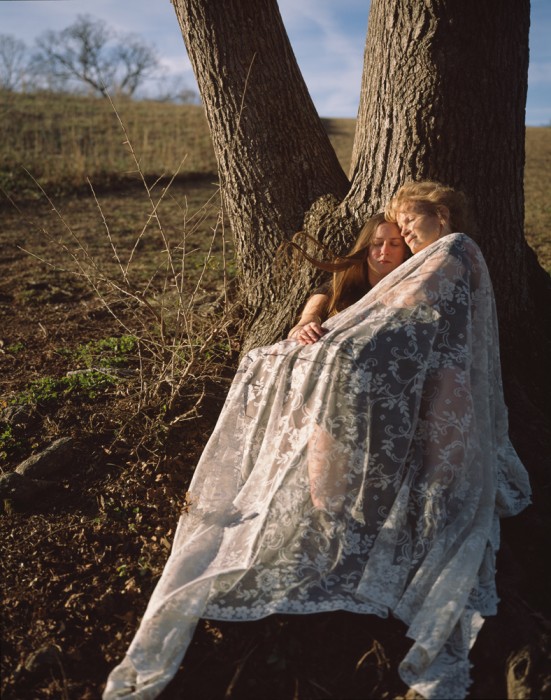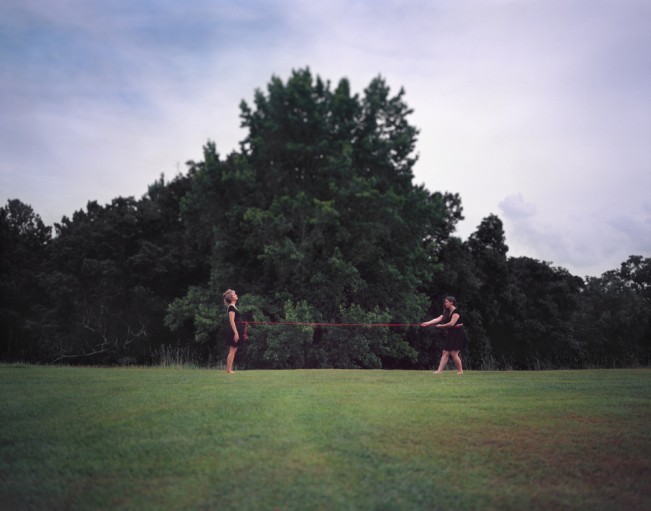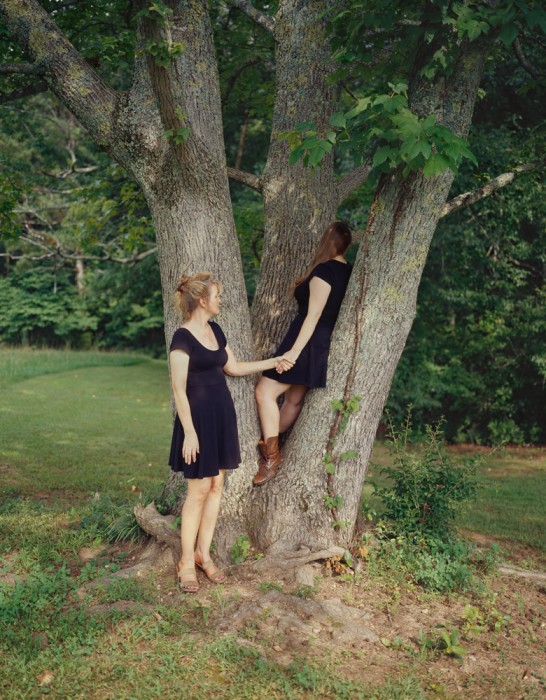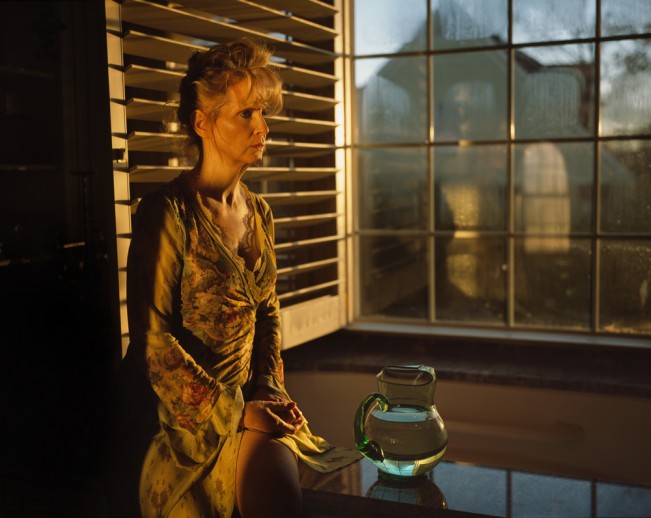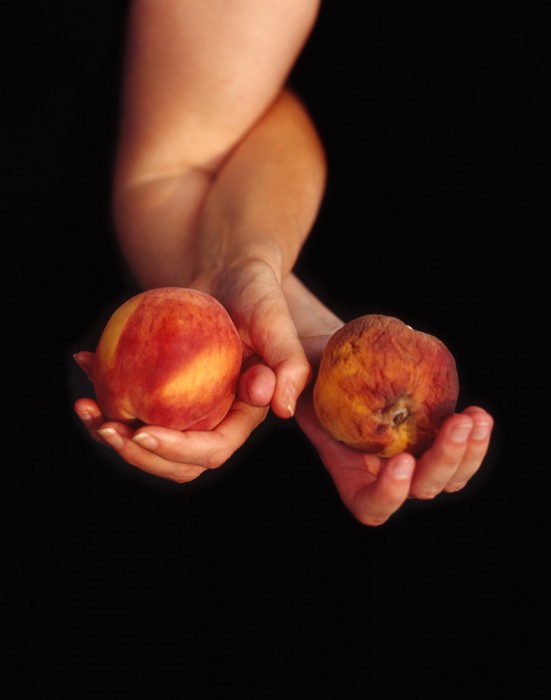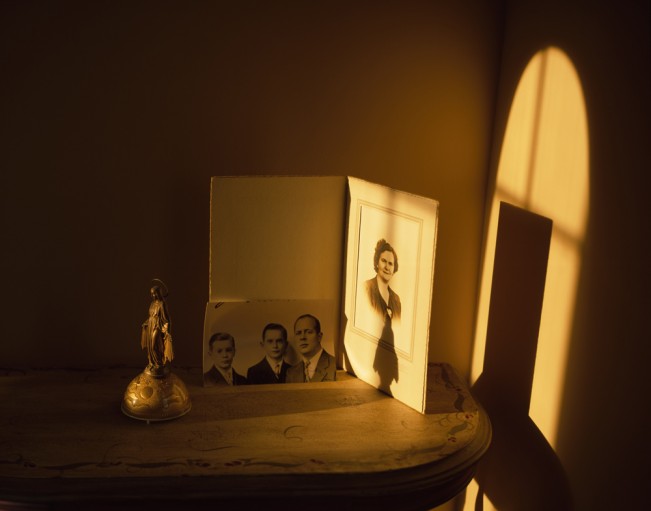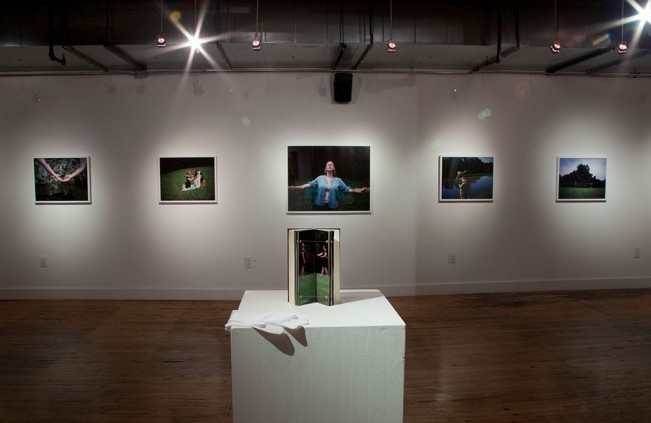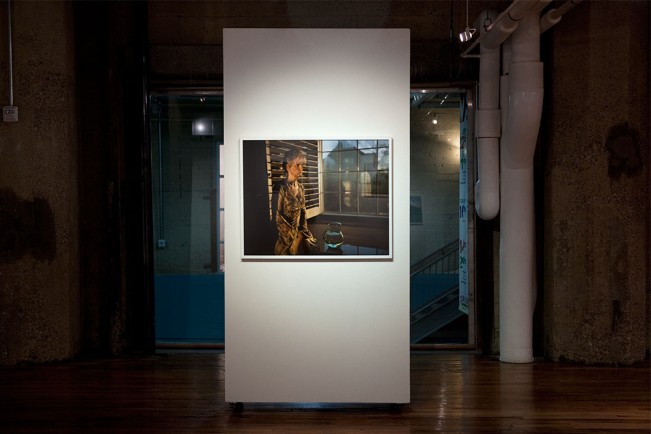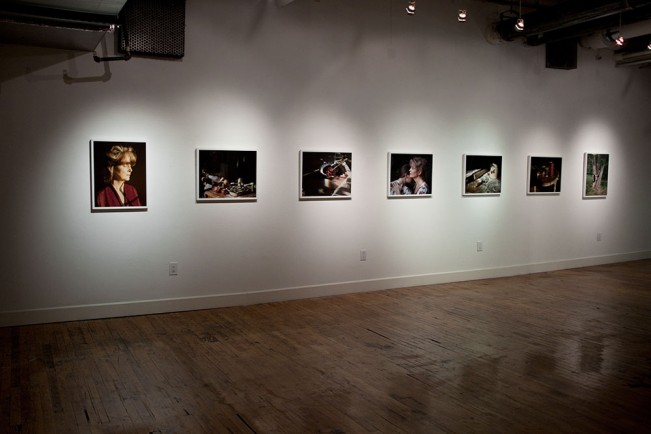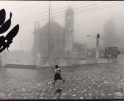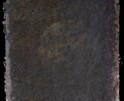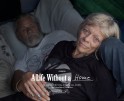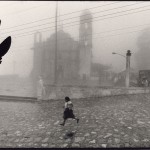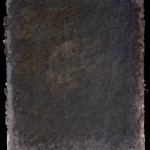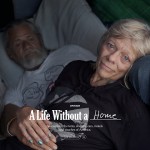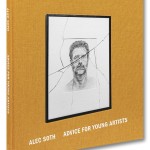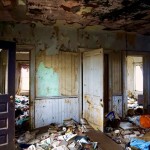Interview with Ashley Kauschinger: Questions of Origin
Two years ago, shortly before I started working with Aline, Lenscratch had just posted the work of Ashley Kauschinger, graduate student at Texas Woman’s University. Ever since then I had kept Ashley on my personal watch list, following her work, and eventually forming a friendship. The work I share today is the result of Ashley’s recent completion of her graduate studies. Ashley images illustrate her changing relationship with her mother, mixing allegory with tradition to create spellbinding photographs.
Ashley Kauschinger is a narrative photographer that explores identity and family. She received her BFA from Savannah College of Art and Design and her MFA from Texas Woman’s University in Denton, Texas. Her photographs have been exhibited nationally in venues such as the Griffin Museum of Photography and Mpls Photo Center. She has been published in the PDN Photo Annual and was a 2012 Critical Mass Finalist.
Ashley is also the Founding Editor of Light Leaked (www.lightleaked.com), an online photography magazine that creates dialogue and community.
Questions of Origin
Questions of Origin is a series that investigates complicated aspects of the mother/daughter relationship and distills them into constructed narratives that evolved from childhood memories of the adult daughter. These ideas are communicated through the use of symbolism and metaphor, to encourage the viewer to project their own experiences onto the photographs.
The imagery primarily occurs within two settings: landscape and domestic space, and are used to communicate aspects of being a woman. The landscape images represent the female body, and draws upon the metaphor of the land creating life. The domestic space is utilized to represent society’s view of the role of women, and to recall memories of learning how to be a woman from the maternal figure. Specific times of day often function as metaphors. For example, some of the images occur while the sun is setting, which suggests the passage of time. Others occur during mid-day to suggest the burgeoning possibilities of life. Overall, the use of light and deep blacks play a pivotal role in creating a tension, emotional atmosphere, and to suggest a sense of memory to the viewer.
The still lives use objects that are personal but act as universally relatable symbols of femininity, such as thread, cloth, and kitchen tools. These objects draw a connection between what is passed down from mother to daughter, such as learning to sew and cook, as well as family heirlooms.
The dual portraits explore the past and present. Throughout the work, the two figures communicate through gesture to investigate the relationship and emotional connection between the mother and daughter. The individual portraits contemplate the mother and daughter when separated, and examine past memories, the search for independence, and feelings of loneliness and longing.
Start with the beginning. What brought you to make work about your maternal relationship? I think there is something instinctual in humans, maybe it is curiosity, to further investigate their parentage. Or is this more so an analysis of your relationship?
For the last few years I had been making work about my family without photographing any of my family members—mostly still lives and self-portraits. During this time, I had been feeling a change in my relationship with my mother. The mother/daughter relationship is complicated and changes as you both change and as time passes. For me, there started to be a greater physical distance, but an unchanging emotional closeness. As well as, a shift in that instead of being a child being cared for by a mother, we began to care for one another. I started to think about what it means to be a woman, and how much of that is influenced by my mother. I was interested in looking from the past up to the present to explore the relationship and how it affected me, but ultimately how it affected both of us. I feel that the mother/child relationship is important to a lot of people, and I wanted to make images that could be personal to many.
In the end, I think that art is about asking questions that don’t have finite answers: life, death, family, love. For me this work was about dropping a line in that water.
What is your mother’s take on the work? How did/does she respond to her participation and the overall outcome?
This was difficult work to make. That is a pretty vague statement since all art is difficult to make. It’s hard when you have to intimately depend on yourself and another person to create work. I might be having a bad day, or she might. It’s different than doing one portrait session with a stranger—you have to show up and trust each other over and over.
My mom loves me, and wanted to be a part of my art. Because of that she had to reveal her memories and spirit. That’s not an easy thing to do. I had to bring respect, kindness, and direction. Did both of us always show up with these things? No, especially at the beginning. But that’s okay. Love means you forgive each other.
At first, I think she was worried about what the work was going to say about us. She knew this work was going to be shared in a public way, and that’s scary. I shot the first half of the series this past summer, and then finished it this winter. In between that time, I made an artist book that used 4 or 5 images from the summer. After I showed it to her, the second half of shooting went easier because I think she understood the work more fully. If I could change something, I would have explained the work more before we started.
Now that the work is complete, I think she feels proud to be have created it together. I don’t want to speak for her too much, but I think we will both treasure the work as an emotional document of our relationship up to this point.
Some of the symbolism you use is dated, such as the use of kitchen tools, sewing material, and the cherry pie. Why did you choose to use more traditional objects to represent the bonds between you and your mother?
I think the work is setting traditional symbols into a contemporary context that’s representative of my mother and me. I learned how to be a woman from my mother, who is from a different generation. Although many aspects of being a woman have changed, I still had traditional ideas of womanhood passed down to me. I think that having the power to create art allows me to reflect on ideas of being female that are still present. We still clearly associate kitchen tools, thread, lace, etc as feminine objects because they are still taught to women as being for women.
I am interested in how this work has changed you. What have you discovered about yourself in the process?
The honest answer is, I’m not sure yet. I think this is work that I will understand more as I continue to look back on it over time. For right now, as a photographer, I learned more about what it means to respect a relationship I am photographing. As a person, I uncovered little glimpses of what has created my current identity as a woman: my mother, the South, love, sadness, memory.
You streamlined right into your graduate studies without pause. In retrospect how does your work and practice reflect this decision?
I went right into graduate school after I finished undergrad–when and where to go to grad school is always a hard decision. I was going to wait, but an opportunity to go to Texas Woman’s University came up, and I decided to go. I’m glad I did. I can’t imagine what my life would look like if I didn’t. Grad school really focused me. But I do see the advantages of taking time in between, and I went through cycles of getting burnt out.
What I learned from graduate school is how to balance all the different areas of my life: making art, working, teaching, promotion, etc. I built a beautiful network and community. The most essential thing about grad school is having time, and giving yourself permission to stand up and be an artist.
I went to a grad school that has a really close community, and I think this important for success in a program. You support and push each other. If anyone is thinking about going to graduate school, I would research all the schools that seem like the best fit on paper and then go visit. Ask the graduate students to go out for dinner, and see how they interact. Are they willing to answer your questions? Do they seem inspired and excited to be around each other?
What’s next?
In August, I will be moving to Columbia, South Carolina. My dreams for the future are to continue a life of creating and being involved with photography. I have a few projects I am planning on starting for the community and for my work. I will continue to be the editor of my online magazine, Light Leaked, which I am hoping to expand now that I am out of school. I am finding my footing, and am interested in working at non-profits, teaching, or running workshops.
Posts on Lenscratch may not be reproduced without the permission of the Lenscratch staff and the photographer.
Recommended
-
Suzanne Theodora White in Conversation with Frazier KingSeptember 10th, 2025
-
Maarten Schilt, co-founder of Schilt Publishing & Gallery (Amsterdam) in conversation with visual artist DM WitmanSeptember 2nd, 2025
-
BEYOND THE PHOTOGRAPH: Q&A WITH PHOTO EDITOR JESSIE WENDER, THE NEW YORK TIMESAugust 22nd, 2025
-
Beyond the Photograph: Editorial Q&A with Photographer Tamara ReynoldsJuly 30th, 2025

